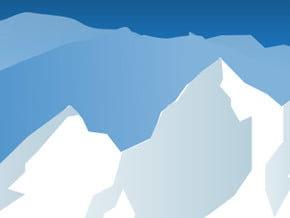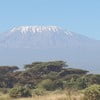
5 Days Kilimanjaro Climbing
| Mountain: | Kilimanjaro (5 895 m / 19 341 ft) |
| Activity type: | Hiking |
| Activity level: | Moderate/ Challenging |
| Elevation: | 5 895 m / 19 341 ft |
| Duration: | 5 Day(s) |
| Expenses: | from$ 2 000 |
Overview
| Route Name: |
5 Days Kilimanjaro Climbing, 5 Days Kilimanjaro Climbing is the only uncomplicated to Uhuru peak on Mount Kilimanjaro Climbing because of its gentle slopes but need optional acclimatization day that one can reschedule to 6 days. The Marangu route is known as Coca-Cola Route meaning simple like Coca cola.5 Days Kilimanjaro Climbing
Day 1: Marangu Gate to Mandara Hut.
Take a short drive from Arusha town to the Kilimanjaro Park Gate (1,830 m.) lies at the edge of Marangu, which is an attractive village with many small coffee and banana plantations. After completing the entrance formalities, we climb up through attractive and unspoiled forest to reach the clearing containing Mandara Hut (2,700 m.). The volcanic remains of Maundi Crater are nearby, and make a good afternoon excursion. An alternative is to rest and enjoy the beautiful forest. There is a rich birdlife at the huts and monkeys are often seen as well. [3-5 hours walking to Mandara Hut]
Day 2: Mandara Hut to Horombo Hut
The first part of the walk is a steep ascent through forest, but the path soon opens out into grassy moorland and, in clear weather, there are good views of Kibo and Mawenzi peaks. We climb steadily through the moorland zone, containing giant heather and occasional stands of groundsel, to eventually reach Horombo Hut (3,720 m.). Sunrises and sunsets here are often very stunning, the site is close to the glaciated dome of Kibo, and there is a real sense of being above the clouds. [4-6 hours walking from Mandara Hut to Horombo Hut]
Day 3: Horombo Hut to Kibo Hut
We climb very gradually towards the lunar desert of the Saddle between Mawenzi and Kibo. The terrain changes to screed and there is a palpable sense of high altitude wilderness. We usually reach Kibo Hut (4,700 m.) at the bottom of the crater wall by midday and the afternoon is free (to contemplate the summit ascent!!). The remainder of the day is spent resting and eating in preparation for the final climb before a very early night! [4-5 hours walking from Horombo Hut to Kibo Hut]
Day 4: Summit Day then down to Horombo Hut
We will start our ascent by torchlight at about 1 a.m. so that we can be up at Gillman’s Point by sunrise. The initial climb is steep over loose volcanic screen, but there are some well-graded zigzag and a slow but steady pace will have us up to Gillman’s (5,685 m.) in about five or six hours. We will rest there and spend some time taking in the sunrise. Those who are still feeling strong can make the three hour round trip from here along the crater rim to Uhuru Peak (5,896 m.), passing close to the spectacular glaciers that still occupy most of the summit area. The descent is surprisingly fast and we return to Horombo Hut for the night. [11-15 hours walking from Kibo Hut to Gillman’s Point]
Day 5: Horombo Hut – Arusha
After breakfast,we will start with a pleasant moorland walk to Mandara and then a lovely forest walk to the National Park gates to Arusha town. The greenness and lushness of the forest is quite a stunning contrast to the summit day, and it really makes you realize how varied the scenery on Kilimanjaro really is. [5-6 hours walking]
1 Pax $ 1800 | 2 – 3 Pax $ 1395 per person | 4 – 6 Pax 1320 per person | 8 – 10 pax $ 1250 pp
Included in this tour:
2 nights’ accommodation at Peace Hotel.
All nights’ accommodation in Huts.
Professional, experienced, mountain guides.
All Park fees and Rescue fees.
All meals while on the Mountain.
Arrival and Departure transfers.
Guides, Porters, cook salaries and park fees.
Large portions of fresh, healthy, nutritious food.
Clean, purified drinking water.
Fair and ethical treatment of porters.
Sleeping Mattress.
Excludes:
Tanzania Visa: $50 per person on arrival.
Personal Expenses.
Optional Tours.
Tips and any items of personal nature.
Book This Tour |
| Activity type: |
Hiking |
| Activity level: |
Moderate/ Challenging |
| Type of Climb: |
Trekking |
| Location: |
Africa, Tanzania |
| Starting Point: | |
| Parent Range: | Please update |
| Mountain: | |
| First Ascent: |
6/11/2005 |
| Duration: |
5 Day(s) |
| Max. Elevation: |
5 895m / 19 341 ft |
| Vertical Gain: |
1 000m / 3 281 ft |
| Length: |
70km / 43 miles |
| Climbing Season(s): |
31 May-31 Dec; 01 Jan-31 Mar; |
| Nearst Airport(s): |
|
| Convenience Center(s): | |
| National Park(s): |
0 climber who were here
4
Kilimanjaro: Marangu Route
Duration: 5 days hiking
Price: $ 1500person
$ 1450person for groups of 3 – 6 people
$ 1250person for groups of 6 and above
Extra day on the mountain: $190/person
The Marangu Route is also known as the "Coca Cola" or "tourist" route. It is the easiest and shortest route to the summit. This is also the only route with the comforts of sleeping huts at every camp site with solar lights and comfortable beds. The huts are communal, and the bunks have a sponge mattress and pillow. There are 60 beds at both Mandara and Kibo Huts and 120 beds at Horombo Hut. Bathrooms and running water are available at the two lower huts. Mens' and ladies' latrines are available at the last camp but are very basic.
All climbing groups, often from several countries around the world, share meals in dining huts providing a jovial and energetic atmosphere. Soft drinks, bottled water, and beer may be for sale at the huts. Bring small Tanzanian bills to purchase these items (prices increase with elevation).
This route is usually done on 5 days but can be done in 6 days for better acclimatization. The extra day can be spent resting at Horombo or climbing the small peak of Mawenzi.
Marangu Itinerary
Moshi
815m / 2670ft Booked into your hotel in Moshi Keys Annex for overnight and briefing from your guide.
DAY 1
To Mandara Hut
1700m to 2740m
5500ft to 9000ft
7 km, 4-5 hours
Montane Forest After breakfast and briefing, drive to the Kilimanjaro National Park Gate (45 minutes), register and commence the climb. Walk through the rainforest to the Mandara encampment located at 9000 ft / 2740 m. A side trip to Maundi Crater is a good way to see the surroundings including Northern Tanzania and Kenya. In the rainforest, look for towering Eucalyptus trees, bird life, and Colubus monkeys.
DAY 2
To Horombo Camp
2700m to 3700m
9000ft to 12,100ft
11 km, 6-8 hours
Heathland After about 1 hour, you will leave the glades of the rainforest and follow an ascending path on the open moorlands to the Horombo encampment. Views of Mawenzi and the summit of Kibo are amazing. Look for giant lobelias and grounsels. You will start to feel the affects of the altitude.
If you wish to extend you trek, here you can spend an extra day resting at Horombo or climbing the small peak of Mawenzi.
DAY 3
To Kibo Camp
3700m to 4700m
12,100ft to 15,400ft
10 km, 6-8 hours
Alpine Desert Ascending, we now pass the last watering point, walking onto the saddle of Kilimanjaro between the peaks of Kibo and Mawenzi. Vegetation begins with upper heathland but then disappears into "moonscape". Dinner, rest, and prepare for summit climb.
DAY 4
To Summit and Horombo
4700m to 5895m
(and down to 3700m)
15,400ft to 19,300ft
(and down to 12,100ft)
4 km up / 14 km down
10-15 hours
Alpine Desert Very early in the morning (midnight to 2am), commence the climb to the summit on steep and heavy scree or snow up to Gilman's point located on the crater rim at 18640 ft / 5861 m (4-7 hours). Continuing, we now ascend to Uhuru Peak, which is the highest point in Africa: 19340 ft / 5895 m (1-2 hours). Unbelievable views at every turn. Get your picture taken at the summit to show your friends. From here, we now descend, stopping for lunch and a rest at Kibo before continuing on to the Horombo encampment for dinner and a tired but happy overnight (1-2 hours).
This beginning of this climb is done in the dark and requires headlamps or flashlights. It will be very cold until you start descending, so you will need all of your warm layers. This is, by far, the most difficult part of the trek with many switchbacks. "Pole pole" and an optimistic attitude will get you there!
DAY 5
To Moshi
3700m to 1700m
12,100ft to 5500ft
18km, 5-7 hours After breakfast, A steady descent takes us down through moorland to Mandara Hut (2700m / 8858 ft), the first stopping place at the Marangu route. Continue descending through lovely lush forest on a good path to the National Park gate at Marangu (1830 m / 6004 ft). At lower elevations, it can be wet and muddy. Gaiters and trekking poles will help. Shorts and t-shirts will probably be plenty to wear (keep rain gear and warmer clothing handy).
A vehicle will meet you at Marangu village to drive you back to your hotel in Moshi Keys Annex
show:
- 6
- 18
- 36
|
Availability
|


